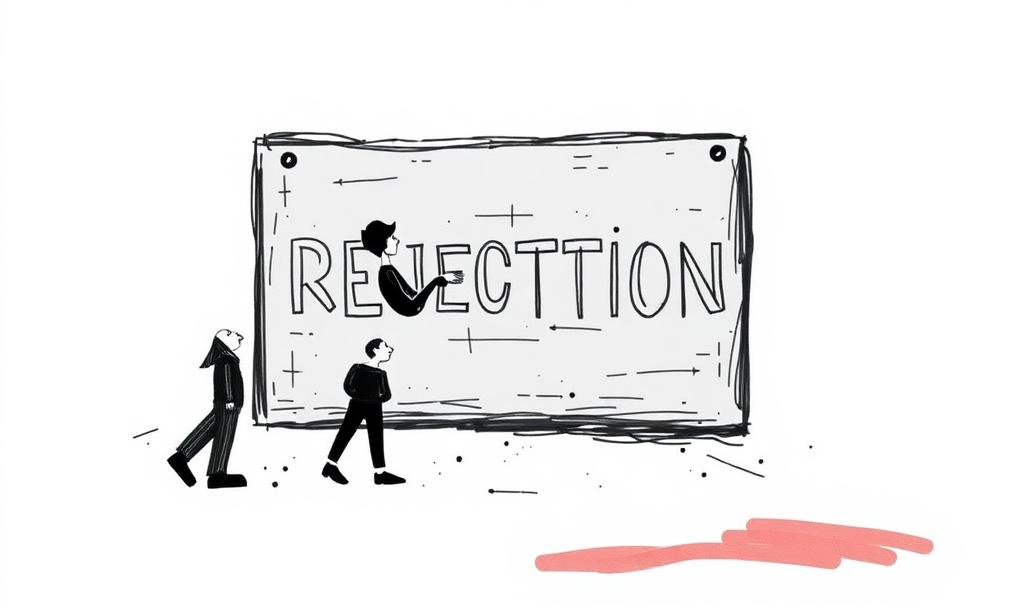How to Handle Rejection in Networking Without Burning Bridges
How to Handle Rejection in Networking Without Burning Bridges
Rejection is an inevitable part of life, and in the world of networking, it’s no different. Whether you're reaching out for a job opportunity, pitching a collaboration idea, or simply trying to build professional connections, rejection can sting. However, the way you handle rejection can significantly impact your reputation and future opportunities. By approaching rejection with grace and strategy, you can preserve relationships and even turn a "no" into a future "yes."
The Nature of Networking Rejections
Networking involves stepping out of your comfort zone and reaching out to people who may not always respond positively. Common forms of rejection include:
No Response: The person doesn’t reply to your email or message.
Polite Decline: You receive a respectful “I’m not interested” or “Not at this time.”
Blunt Dismissal: Occasionally, the rejection may come off as curt or discourteous.
Understanding that rejection is rarely personal can help you process it more constructively. It often reflects the other person's priorities, workload, or timing rather than a judgment on your value.
Steps to Handle Rejection Without Burning Bridges
1. Accept the Rejection with Grace
The first step is to accept the outcome without showing frustration or disappointment. Responding with grace shows professionalism and emotional maturity.
Example Response: “Thank you for letting me know. I completely understand and appreciate your time and honesty.”
By remaining courteous, you leave the door open for future interactions.
2. Acknowledge and Appreciate Their Time
Acknowledging the effort someone made to respond, even if it’s a rejection, reinforces your respect for their time.
Tip: Say something like, “I truly appreciate you getting back to me and sharing your thoughts.”
This small gesture can leave a positive impression, even after a rejection.
3. Seek Feedback (When Appropriate)
If the rejection was for a job opportunity or a proposal, consider asking for constructive feedback.
Example: “I completely understand your decision. If possible, could you share any feedback on how I could improve for the future?”
This shows your willingness to grow and leaves a positive impression on the person rejecting you.
4. Express Interest in Future Opportunities
Letting the other person know you’re open to connecting later demonstrates resilience and long-term thinking.
Example Response: “I understand the timing isn’t right, but I’d love to stay connected and explore opportunities to collaborate in the future.”
This keeps the relationship alive for potential opportunities down the road.
5. Reflect on the Experience
Every rejection is an opportunity to learn and grow. Ask yourself:
Could I have approached the situation differently?
Was my ask aligned with the other person’s priorities?
How can I improve my communication or value proposition next time?
By analyzing your approach, you can refine your networking skills.
6. Stay Connected and Engaged
Rejection doesn’t mean the end of a relationship. You can maintain a connection by engaging with their content, congratulating them on achievements, or sharing resources they might find valuable.
Example: If they post an article on LinkedIn, comment thoughtfully to keep the relationship alive.
7. Focus on the Bigger Picture
Networking is a marathon, not a sprint. Rejections are a part of the journey, and persistence often leads to success. By staying focused on your long-term goals and continuing to build relationships, you can overcome short-term setbacks.
A Personal Story: Turning Rejection into Opportunity
When I was working with [Company Name], I reached out to a potential partner to collaborate on a blockchain project. Despite presenting a detailed proposal, I received a polite rejection. Instead of being discouraged, I thanked them for their time and asked if we could reconnect in the future. Over the next few months, I stayed in touch by commenting on their posts and sharing relevant insights.
Six months later, they reached out to me with a new opportunity, impressed by my persistence and professional demeanor. What started as a rejection turned into a successful collaboration that benefited both of us.
Why Rejection is a Hidden Opportunity
Rejection forces you to reassess and refine your approach. It helps you:
Build resilience and emotional intelligence.
Understand what works and what doesn’t in professional interactions.
Develop stronger strategies for future networking.
By embracing rejection as a learning experience, you can grow both personally and professionally.
Practical Tips for Handling Rejection
Detach Emotionally: Focus on the professional aspect of the rejection, not the personal.
Follow Up Later: After some time, re-engage with the person to show your continued interest.
Diversify Your Network: Don’t rely on a single connection. Keep expanding your network to reduce the impact of individual rejections.
Stay Positive: Maintaining a positive attitude will reflect in your interactions and enhance your reputation.
Conclusion
Rejection in networking is not the end—it’s an opportunity to learn, grow, and strengthen relationships. By handling rejection with grace, maintaining professionalism, and focusing on the bigger picture, you can preserve connections and even turn them into future opportunities. Networking is about building long-term relationships, and sometimes a rejection today paves the way for success tomorrow. Keep reaching out, stay resilient, and remember that every "no" brings you closer to a "yes."



